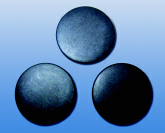Aug 12, 2003Aug. 13, 2003 - Texas Instruments plans to offer an RFID tagging system to the rental clothing and dry cleaning industries. The tags, which can be sewn into or attached to textile items, are expected to provide more accurate identification and improve the handling of individual items, from
the start of the cleaning process through delivery to the customer.
"This is something we have been looking at for sometime," says Tom Lail, technical salesman at Texas Instruments' Radio Frequency Identification Systems unit. "We expect medium- to large-size dry cleaning companies, as well as textile rental companies, to see benefits from deploying the tags."
The Laundry Transponder uses a 13.56 MHz TI microchip that is compliant with ISO 15693. The circular tag is 22 mm in diameter and housed in plastic. The plastic protects the tag from the harsh environment that textiles go through, and will extend its lifetime so the tag can be reused. "The tag will exceed the lifetime of a garment by two or three times," says Lail.
The tag has a 64-bit factory-programmed serial number and 2,000 bits of read/write memory. That means the dry cleaning or clothing rental companies can program the tag with both user and application-specific information. "This enables not only inventory controls but the ability to record the number of wash cycles the garment might go through," says Lail.
The transponder's ID also can be laser-etched on the plastic casing for visual identification. TI believes the new tag will stand out in the market both for its read range (12 inches) and speed (up to 50 tags can be read per second). TI says potential customers in the United States have been testing the Laundry Transponder for the past 12 months. TI expects to convert them to paying customers shortly.
TI had been making laundry tags for a company that sold them under its own brand. TI decided to sell the tags itself and eliminate the middleman and the associated markup. Lail says the fact that the tags comply with the ISO 15693 standard makes them suitable for international deployments.
The new tag is currently being produced in engineering samples. Full production is set for later this quarter.


